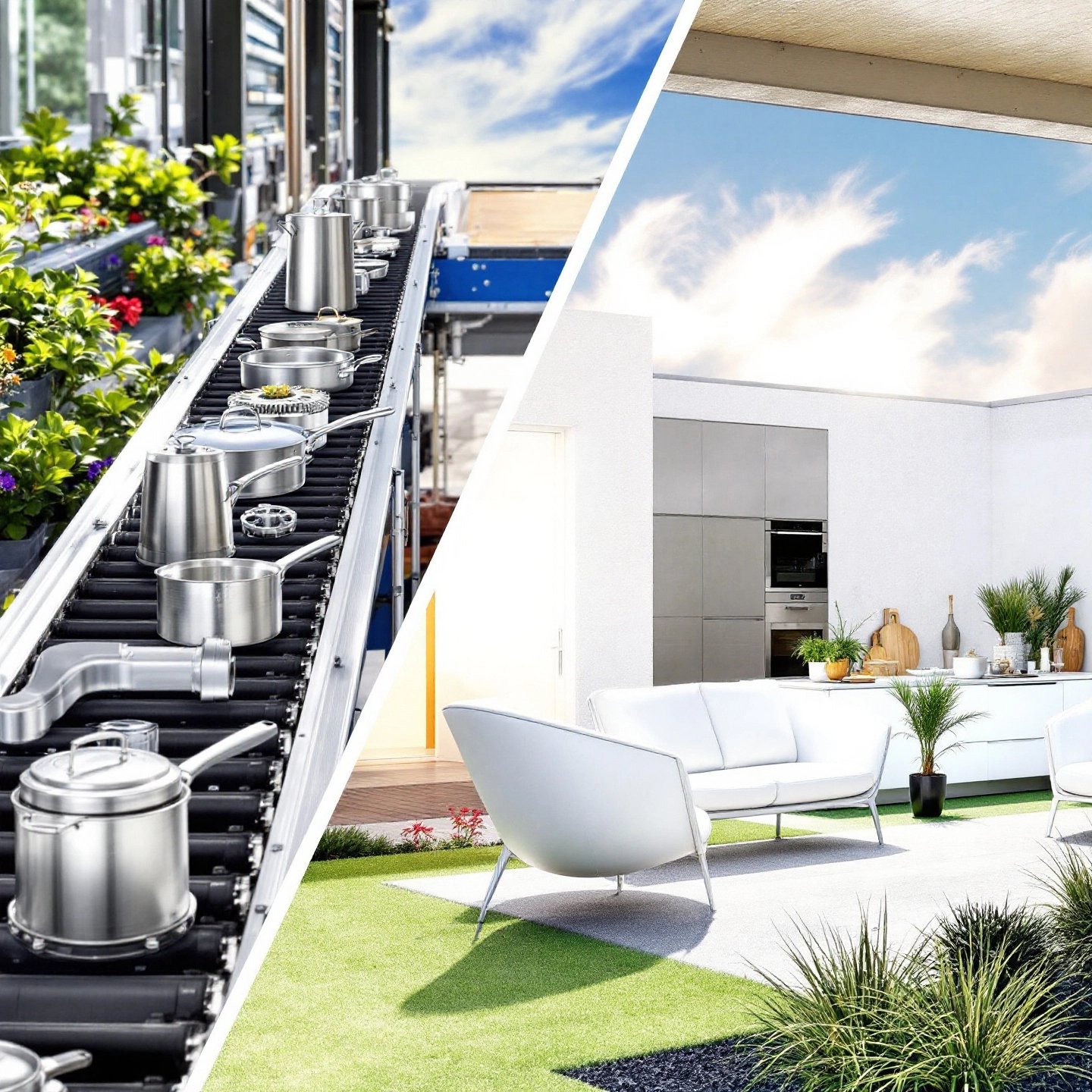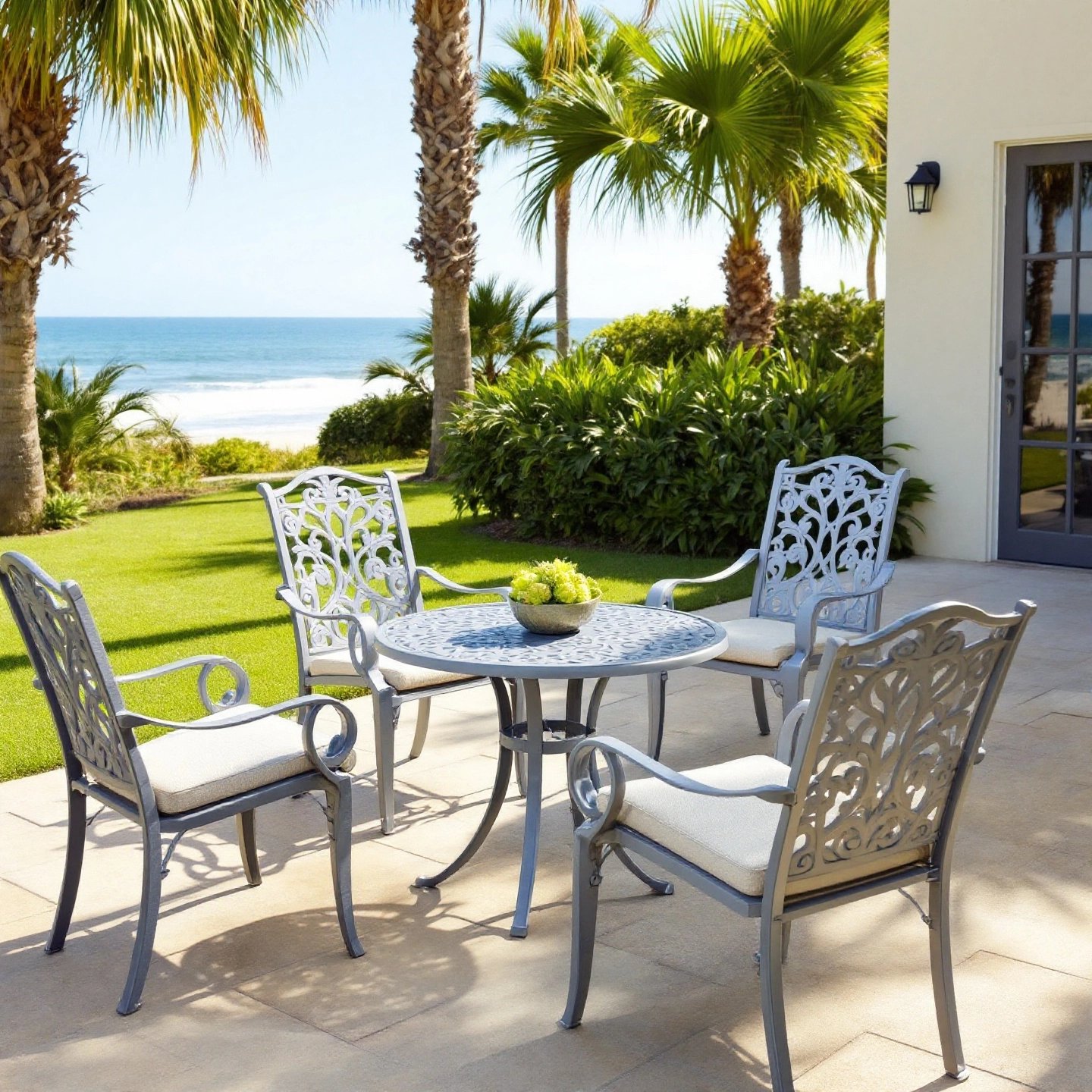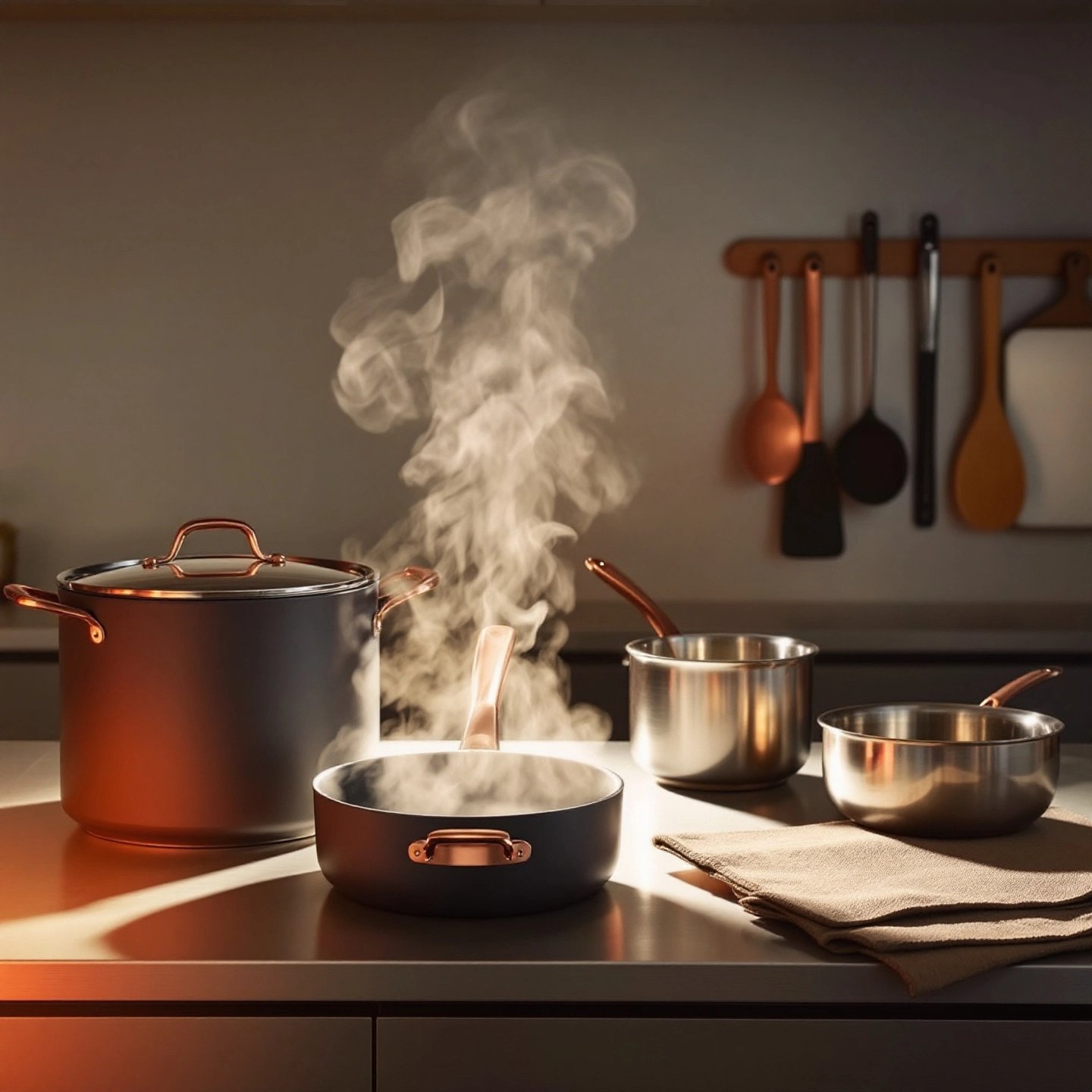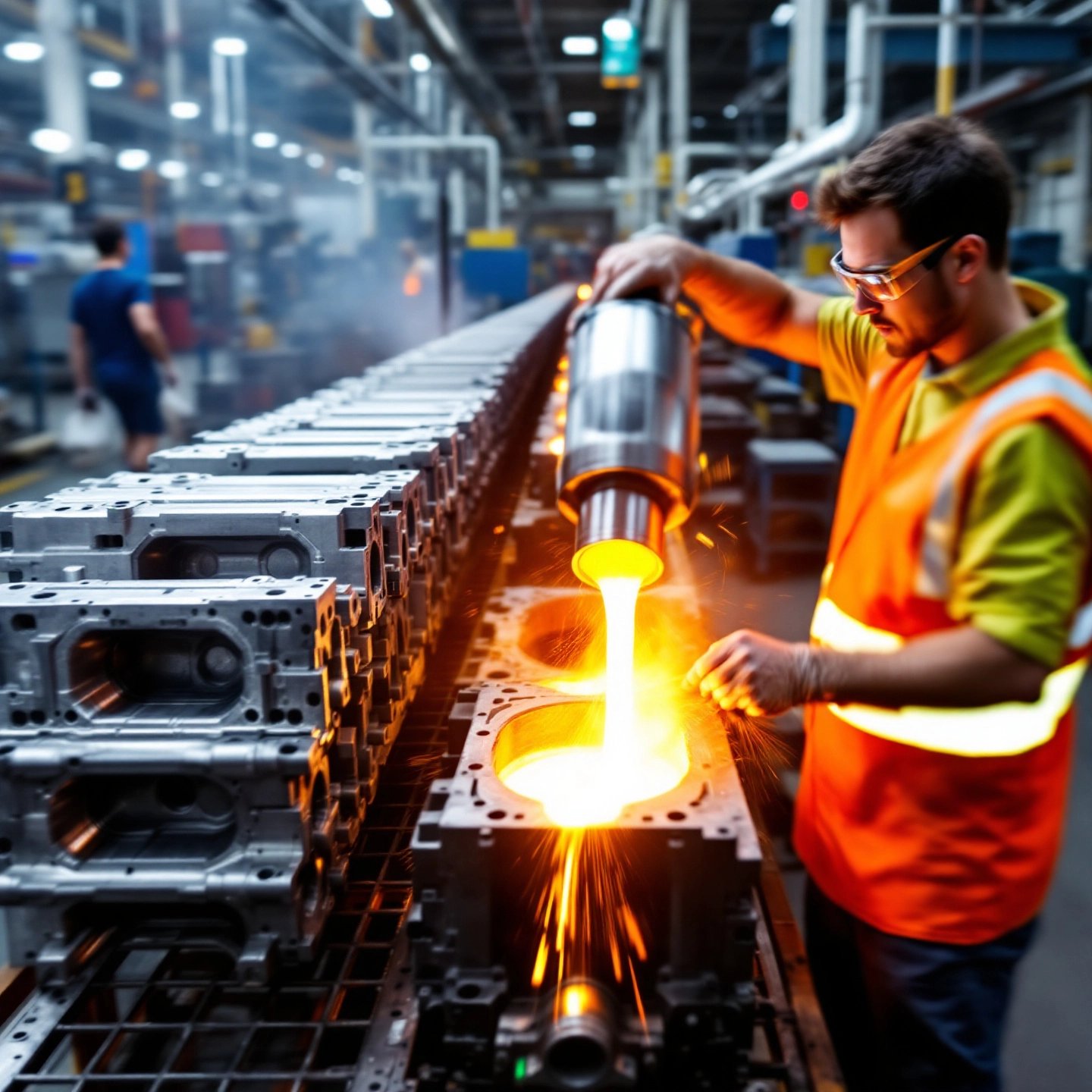
What if one material could combine lightweight design with industrial-strength durability while resisting rust in harsh environments? Meet cast aluminum – the unsung hero of modern manufacturing and household essentials. This versatile alloy, created by melting and molding aluminum into precise shapes, offers a unique blend of properties that make it indispensable across industries.
Cast aluminum stands out for its:
From sleek outdoor furniture to high-performance engine components, cast aluminum uses are projected to drive a $101.95 billion global market by 2029, growing at 8% annually according to industry research. This growth reflects its expanding role in sustainable manufacturing – automakers now use cast aluminum parts to reduce vehicle weight by up to 40%, while architects specify it for corrosion-resistant building facades.
Modern households benefit equally from cast aluminum advantages. Your patio set withstands coastal salt spray, your favorite skillet distributes heat evenly, and your car’s transmission housing survives pothole impacts – all thanks to this adaptable material. As manufacturers increasingly adopt recycled aluminum scrap in casting processes, its environmental credentials continue strengthening.
In this essential guide, we’ll explore:
Whether you’re sourcing materials for an industrial project or choosing durable home goods, understanding cast aluminum’s capabilities ensures smarter, future-proof decisions.
What exactly happens when ordinary aluminum transforms into high-performance cast components? Let's break down the science behind this manufacturing marvel. Cast aluminum refers to aluminum alloys melted at temperatures between 1,200°F and 1,600°F (650°C-870°C) and poured into molds - a process dating back to 19th century industrial revolutions but perfected with modern precision.
Unlike pure aluminum's softness, cast aluminum combines:
This mixture creates materials capable of withstanding 20,000-45,000 psi tensile strength while maintaining just 2.7g/cm³ density - 65% lighter than zinc and 70% lighter than cast iron.
| Process | Mold Type | Cycle Time | Surface Finish |
|---|---|---|---|
| Die Casting | Reusable steel | 15-60 seconds | Mirror-smooth |
| Sand Casting | Single-use sand | 2-48 hours | Textured |
Modern die casting dominates high-volume production, injecting metal at pressures up to 30,000 psi to create components like engine blocks with ±0.2mm tolerances. Sand casting remains vital for large parts like marine components, using binder-treated sand molds that withstand 2,900°F pours.
Different formulations serve specific industrial needs:
As we'll explore next, these manufacturing fundamentals directly enable cast aluminum's exceptional performance in outdoor furniture - from precise mold details to weather-resistant alloy formulations.

What if your patio furniture could withstand decades of coastal storms, require zero seasonal painting, and still look brand new? Cast aluminum outdoor furniture delivers this reality through smart engineering and advanced manufacturing processes. Unlike traditional materials that degrade quickly, modern cast aluminum patio sets combine artful design with molecular-level durability.
Cast aluminum’s corrosion resistance stems from two key factors:
Manufacturers like Shengxin Aluminum enhance this durability through powder-coated finishes available in 200+ RAL colors. This electrostatic process bonds pigment molecules to the metal at 400°F (204°C), creating a surface that resists:
Unlike wrought iron’s limited shapes, cast aluminum flows into intricate molds allowing:
Despite its lightweight feel (33% lighter than steel), cast aluminum patio furniture maintains stability through:
| Feature | Benefit |
|---|---|
| Hollow-cast legs | Reduces weight without sacrificing strength |
| Reinforced joints | Withstands 50 mph winds |
For commercial projects requiring custom designs, aluminium extrusion manufacturers in china like Shengxin Aluminum utilize 5,500-ton extrusion presses to create seamless profiles for:
This combination of weatherproof durability and artistic flexibility explains why 68% of luxury resorts now specify cast aluminum for poolside furnishings. As we’ll explore next, these same material advantages make cast aluminum equally valuable in your kitchen.

When considering cast aluminum cookware, many home chefs ask: 'Is it safe to cook with aluminum?' Modern manufacturing has addressed historical concerns through advanced protective coatings. While bare aluminum can react with acidic foods, today's anodized aluminum cookware forms a non-reactive surface that prevents metal leaching.
Key safety features in contemporary cast aluminum cookware:
With 237 W/m·K thermal conductivity (Cooking for Engineers), cast aluminum:
| Feature | Benefit |
|---|---|
| Instant heat response | Adjusts temperature 2x faster than stainless steel |
| Even heat spread | <5°F variation across 12" skillet surface |
Compared to stainless steel counterparts:
From perfectly browned cast aluminum bakeware to responsive sauté pans, this material's kitchen advantages extend far beyond safety assurances. As we'll explore next, cast aluminum's capabilities shine equally in industrial environments demanding precision engineering.

How does cast aluminum drive innovation across transportation and infrastructure systems? This versatile material proves indispensable in three critical industrial sectors through precision engineering and mass-production capabilities.
Modern vehicles contain 300-400 lbs of cast aluminum components that deliver:
From subway door beams to overhead luggage racks, cast aluminum ensures:
Manufacturers like Shengxin Aluminum supply critical rail components for over 30 subway systems globally, including seismic-resistant door beams tested to withstand 9.0 magnitude vibrations.
Cast aluminum thermal break profiles combat energy loss in HVAC systems by:
| Application | Key Benefit | Production Method |
|---|---|---|
| Auto Transmission Housings | Vibration damping | Die Casting |
| Subway Door Systems | Corrosion resistance | Permanent Mold |
| HVAC Thermal Breaks | Energy conservation | Extrusion |
With 5,500-ton extrusion presses and automated die casting cells, producers like Shengxin Aluminum demonstrate how industrial cast aluminum enables both mass production and custom solutions. As additive manufacturing advances, expect tighter integration of cast and 3D-printed powder coated aluminum profiles components for unprecedented design freedom.
How do manufacturers choose the optimal casting method for aluminum components? The decision hinges on three key factors: production volume, part complexity, and budget constraints. Let’s break down the characteristics of each process using verified industry data.
| Method | Best For | Tolerances | Cost | Cycle Time |
|---|---|---|---|---|
| Die Casting | High-volume (10,000+ units) | ±0.2mm | High | 15-60 sec |
| Sand Casting | Large components (>1m³) | ±1.5mm | Low | 2-48 hrs |
| Permanent Mold | Medium volumes (500-5,000) | ±0.5mm | Moderate | 5-15 min |
While welding cast aluminum offers repair options, porosity risks require careful management:
As we’ll explore next, proper maintenance extends cast aluminum’s lifespan – whether it’s a die-casted engine block or a sand-casted sculpture. The right care routine minimizes the need for complex repairs down the line.
How can you ensure your cast aluminum patio set or cookware stays pristine through decades of use? Proper care combines simple routines with strategic protection. Follow these professional guidelines to maximize your investment:
| Factor | Cast Aluminum | Cast Iron |
|---|---|---|
| Rust Prevention | Inherent corrosion resistance | Requires annual seasoning |
| Cleaning Effort | Dishwasher-safe components | Hand-wash only |
| Structural Repairs | TIG welding possible (requires argon gas shielding) | Specialized brazing needed |
For minor cast aluminum repair like paint chips, use touch-up pens matching your powder coat's RAL color code. Major cracks in structural components should be professionally welded using 4043 filler rod, which matches most alloys' thermal expansion rates.
As industries prioritize sustainability, cast aluminum emerges as a cornerstone of eco-conscious manufacturing. Its infinite recyclability – retaining 95% of original properties through endless reuse cycles – positions it uniquely in the circular economy. The International Aluminium Institute reports recycled aluminum production uses 95% less energy than primary processing, with global scrap integration rates projected to reach 50% by 2030.
For specialized applications requiring precision, companies like Shengxin Aluminum demonstrate how large-scale capabilities (43 extrusion lines up to 5,500 tons) meet evolving demands. Their rail transit components – including earthquake-resistant subway door beams for Beijing Line 19 – showcase cast aluminum’s adaptability in critical infrastructure.
Forward-thinking manufacturers combine:
| Capability | Benefit |
|---|---|
| Custom extruded profiles | ±0.1mm tolerances for EV battery trays |
| Thermal break systems | 30% energy savings in building HVAC |
As cast aluminum scrap prices stabilize through improved collection networks, its role expands in automotive lightweighting and renewable energy systems. The future lies in collaborative innovation – pairing material science advancements with manufacturing expertise to create solutions that are as sustainable as they are durable.
Cast aluminum is created by melting aluminum alloys and pouring them into molds. It’s widely used for products requiring strength and lightweight properties, from automotive parts to outdoor furniture. Modern methods like die casting achieve precision down to ±0.2mm tolerances.
Yes, cast aluminum provides exceptional durability. Its natural corrosion resistance and powder-coated finishes allow it to withstand decades of outdoor use. Manufacturers like Shengxin Aluminum enhance quality through 5,500-ton extrusion presses for structural components in rail systems and HVAC solutions.
Modern cast aluminum cookware is safe when anodized or coated. These FDA-compliant surfaces prevent metal leaching and withstand temperatures exceeding 500°F, offering even heat distribution superior to stainless steel.
While durable, cast aluminum can develop porosity during welding and may require specialized repair. Die casting also involves higher upfront costs for molds compared to sand casting methods.
Cast aluminum is 65% lighter than cast iron (2.7g/cm³ vs 7.8g/cm³) and naturally rust-resistant. It requires minimal maintenance compared to iron’s seasonal repainting needs, though iron retains heat better for cookware applications.
 Інтернет-сервіс
Інтернет-сервіс 0086 136 3563 2360
0086 136 3563 2360 sales@sxalu.com
sales@sxalu.com +86 136 3563 2360
+86 136 3563 2360